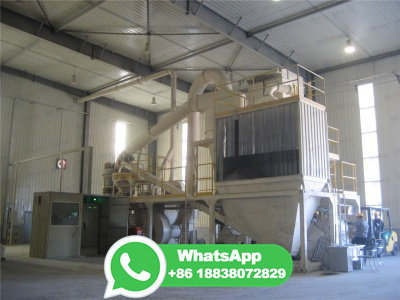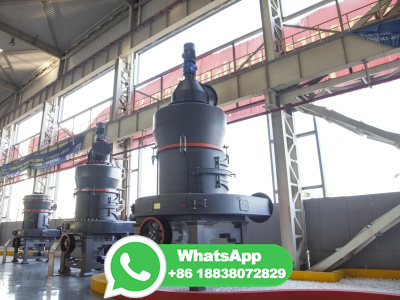
WEBMay 19, 2021 · Chemical process converts plastic into jet fuel ingredients in an hour. By Nick Lavars. May 19, 2021. Researchers Hongfei Lin and Chuhua Jia have developed a new technique for recycling plastics ...
WhatsApp: +86 18203695377
WEBJun 18, 2022 · Currently, hydrogen energy is the most promising energy vector, while gasifiion is one of the major routes for its production. However, gasifiion suffers from various issues, including slower carbon conversion, poor syngas quality, lower heating value and higher emissions. Multiple factors affect gasifiion performance, such as the .
WhatsApp: +86 18203695377
WEBFossil fuels—coal, oil and gas—contain energy that can be converted into other forms through combustion. Coal in solid form is largely made up of the element carbon in pure form, while oil is rich in compounds of carbon and hydrogen—hydrocarbons. In 1913 Friedrich Bergius developed a method for transforming a solid form of coal—lignite ...
WhatsApp: +86 18203695377
WEBDec 1, 2021 · Unprecedented growth in mixed plastic and biomass wastes such as plastic bags, drinking water bottles, agro andforestrywaste, along with COVID19 driven waste (facemask, gloves, PPE kits, surgical masks) have obliged the scientific community to look for technologies that can process and convert both biomass and plastic wastes .
WhatsApp: +86 18203695377
WEBOct 19, 2023 · Coal is a black or brownishblack sedimentary rock that can be burned for fuel and used to generate is composed mostly of carbon and hydrocarbons, which contain energy that can be released through combustion (burning). Coal is the largest source of energy for generating electricity in the world, and the most abundant fossil fuel .
WhatsApp: +86 18203695377
WEBMar 25, 2020 · The FischerTropsch process (FischerTropsch synthesis) is a series of alyzed chemical reactions that convert a mixture of carbon monoxide and hydrogen and into hydrocarbon derivatives. The process is a key component of gastoliquids technology that produces liquid and solid hydrocarbon derivatives from coal, natural .
WhatsApp: +86 18203695377
WEBThe process operated in two stages, with liquidphase hydrogenation first transforming the coal into middle oils, with boiling points between 300°F and 615°F, and subsequent vapor phase hydrogenation then converting these oils to gasoline, diesel fuel, and other relatively light hydrocarbons (Berkowitz, 1979).
WhatsApp: +86 18203695377
WEBPNNL is developing more efficient ways to convert coal and other hydrocarbon sources, like biomass, directly into liquid fuels. These routes offer the potential to reduce emissions and displace oil imports with domestically sourced fuels. Researchers also are developing ways to convert coal and other hydrocarbons into a synthetic gas that can ...
WhatsApp: +86 18203695377
WEBJan 1, 1982 · Coal gasifiion means the complete conversion of coal into gas using heterogeneous gas solid reactions. The main process is the reaction of the carbon of coal with steam, at pressures below 100 bar and temperatures above 750°C, to form a "synthesis gas" containing mainly CO and H 2 with smaller amounts of CO 2 and CH 4 .
WhatsApp: +86 18203695377
WEBNov 1, 2008 · The fractionation process is performed to hydrocarbon molecules to separate them into jet, diesel, gasoline fuels, and other bioderived chemicals as coproducts [62]. p0345 An example of converting ...
WhatsApp: +86 18203695377
WEBOct 18, 2021 · Thermochemical processes use heat and series of endothermic chemical reactions that achieve thermal cracking and convert a wide range of solid waste deposits via four thermochemical processes to hydrocarbon gaseous and liquid products such as syngas, gasoline, and diesel. The four thermochemical reactions investigated in this .
WhatsApp: +86 18203695377
WEBApr 23, 2021 · Abstract: Solid oxide fuel cells (SOFCs) are promising and rugged solidstate power sources that can. directly and electrochemically convert the chemical energy into electric power. Direct ...
WhatsApp: +86 18203695377
WEBFeb 27, 2019 · A team of scientists used liquid metal and a liquid electrolyte to convert gaseous CO2 into a solid, coallike substance. Compared to current methods, the new approach could prove to be a more ...
WhatsApp: +86 18203695377
WEBAug 5, 2021 · The most efficient devices to convert renewable electricity into hydrogen, and vice versa, are reversible solid oxide cells (SOCs). ... The advances presented here demonstrate the viability of upscaling the process of solidoxidecell 3D and brings advantageous stack designs aimed for a costcompetitive and customizable hydrogen ...
WhatsApp: +86 18203695377
WEBSep 30, 2020 · The main investigated routes aim to convert gaseous and solid feedstocks (methane, coal, biomass .) into hydrogen and syngas via solar cracking/pyrolysis, reforming/gasifiion, and twostep chemical looping processes using metal oxides as oxygen carriers, further associated with thermochemical H 2 O/CO 2 splitting cycles. .
WhatsApp: +86 18203695377
WEBAug 1, 2010 · The required water consumption is in the region of 1m 3 (1 ton) per each barrel of fuel production [77] and the coal (bituminous) consumption is between to ton per barrel, according to ...
WhatsApp: +86 18203695377
WEBSep 20, 2018 · Explainer: Where fossil fuels come from. The liquid fuels that power most vehicles have been millions of years in the making. One of the most widespread beliefs about fossil fuels — oil, natural gas and coal — is that these substances started out as dinosaurs. There's even an oil company, Sinclair, that uses an Apatosaurus as its icon.
WhatsApp: +86 18203695377
WEBMar 27, 2019 · The key to the alytic process is the construction of a highly efficient tandem alyst PtMo 2 C/C + Ru/C, which can directly convert CO and H 2 O in aqueous phase to liquid hydrocarbons with ...
WhatsApp: +86 18203695377
WEBThe total expenditure of energy in the world each year is about 3 × 10 17 kJ. 80% of this energy is provided by the combustion of fossil fuels: oil, coal, and natural gas (the sources of the energy consumed in the United States in 2019 are shown in Figure 2 ).
WhatsApp: +86 18203695377
WEBGasifiion. Gasifiion is also a thermochemical process in which the reactions between fuel and the gasifiion agent take place and syngas (also known as producer gas, product gas, synthetic gas, or synthesis gas) is produced. The syngas is mainly composed of CO, H2, N 2, CO 2, and some hydrocarbons (CH 4, C 2 H 4, C 2 H 6, etc.).
WhatsApp: +86 18203695377
WEBSep 12, 2021 · The primary process for FT is the Synthol Process; the schematic is shown in Figure The synthesis gas goes into the reactor at MPa of pressure and 315330°C. The product leaves the reactor where the alyst is recovered, oils are removed by a hydrocarbon scrubber, and the tail gas recovered.
WhatsApp: +86 18203695377
WEBA solid fossil fuel that was formed in several stages out of the remains of land plants that were buried 300400 million years ago and subjected to intense heat and pressure over many millions of year. ... The process that converts solid coal into a liquid fuel such as methanol or synthetic gasoline. How can liquid fuels be produced from coal ...
WhatsApp: +86 18203695377
WEBThe coal gasifiion process converts coal into syngas, consisting mainly of hydrogen (H 2), carbon monoxide (CO), carbon dioxide (CO 2), methane (CH 4) or even hydrogen sulfide and ammonia, of which the composition varies depending upon the type of feedstock and condition during gasifiion. Gasifier is the core unit in a gasifiionbased ...
WhatsApp: +86 18203695377
WEBCoal: Coal constitutes a fossil fuel drawn out from the ground and employed as a fuel for numerous purposes. Dead vegetation gets transformed into coal by the process termed carbonization. Anthracite forms a egory of coal. Answer and Explanation: 1
WhatsApp: +86 18203695377
WEBNov 1, 2019 · In recent studies on alytic hydropyrolysis, biomass is converted into liquid hydrocarbons under moderate hydrogen pressure (20–40 bar) and moderate temperatures (350–480 °C) in the presence of an active alyst [18, 19]. Some recent studies on alytic hydropyrolysis are listed in Table 2.
WhatsApp: +86 18203695377
WEBEq. () represents the thermal decomposition of coal; it decomposes into volatile matter such as hydrogen and hydrocarbon gas and char (residual solid content composed of fixed carbon and ash). Eqs. () and () indie combustion and partial combustion by reaction with oxygen, and supply heat of reaction required for gasifiion. Eqs. () .
WhatsApp: +86 18203695377
WEBMar 17, 2020 · The FischerTropsch process is a series of alyzed chemical reactions that convert a mixture of carbon monoxide and hydrogen and into hydrocarbon derivatives. The process is a key component of gastoliquids technology that produces liquid and solid hydrocarbon derivatives from coal, natural gas, biomass, or other .
WhatsApp: +86 18203695377
WEBCoal liquefaction is the process of making a liquid fuel from coal. The fundamental difference between coal, a solid, and liquid fuels is that the liquid fuels have a higher hydrogen:carbon ratio. ... where each day coal is converted into 260 tons of methanol to supply Eastman's acetate synthesis plants. In 2002, China announced plans to ...
WhatsApp: +86 18203695377
WEBA. Coal B. Forests C. Water D. Wildlife E. None of the above. Answer Click Here: A. 3. Wind is a beneficial resource of energy as it doesn't cause ... The process that converts solid coal into liquid hydrocarbon fuel is called: A. Liquefaction B. Carbonation ... Which are the Fuel cells: A. Carbon cell B. Hydrogen battery C. Nuclear cell D ...
WhatsApp: +86 18203695377
WEBJul 15, 2022 · The insitu CO 2 conversion boosts the calcination process by inhibiting the carbonation reaction and in return, the high purity and hightemperature CO 2 released in the calcination process can be directly used to reform CH 4 into fuels with higher fuel value. Download : Download highres image (372KB) Download : Download fullsize .
WhatsApp: +86 18203695377
WEBJul 5, 2015 · In the process of our subject, "United States Patent 8,999,134 Manufacturing CarbonBased Combustibles by Electrochemical Decomposition of CO2", it is seen that Carbon Dioxide, in combination with Water, H2O, can be efficiently converted into an hydrocarbon synthesis gas mixture of Carbon Monoxide and Hydrogen from .
WhatsApp: +86 18203695377
WEBCO 2 dissociation into carbon and oxygen is the mechanism that plants use to fuel their growth. One could think that an analogous process could be devised in order to generate fuel from CO 2, potentially using renewable energy sources to drive the would potentially yield a source of hydrocarbon fuels from the abundant (and .
WhatsApp: +86 18203695377